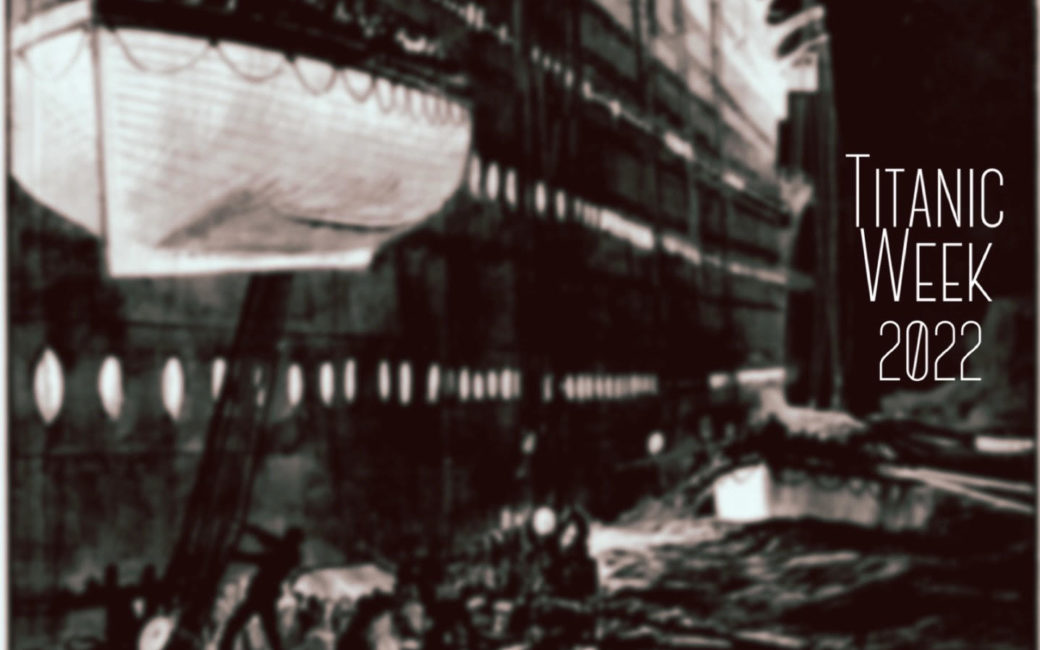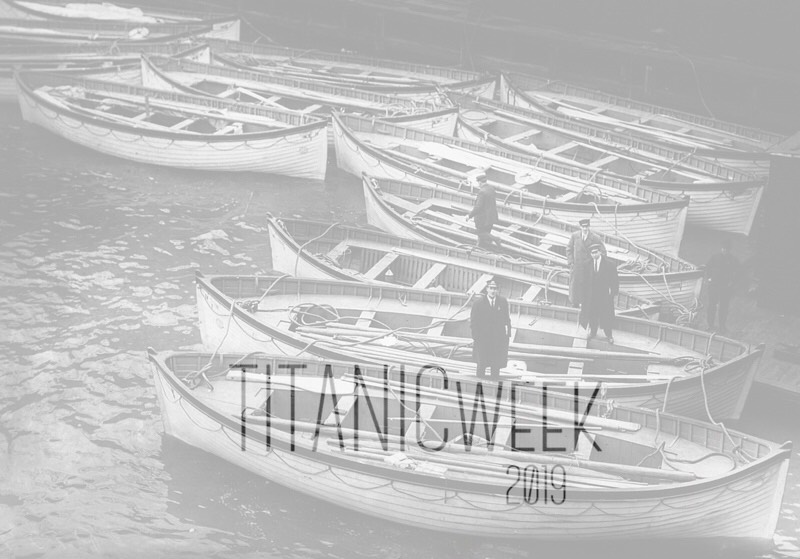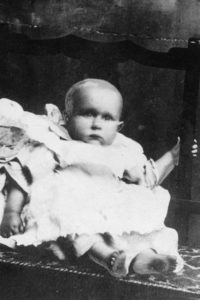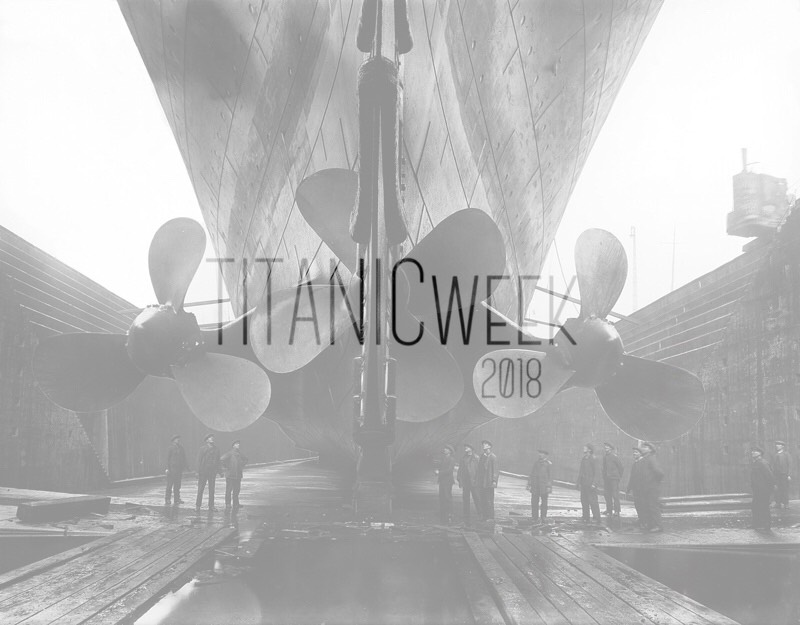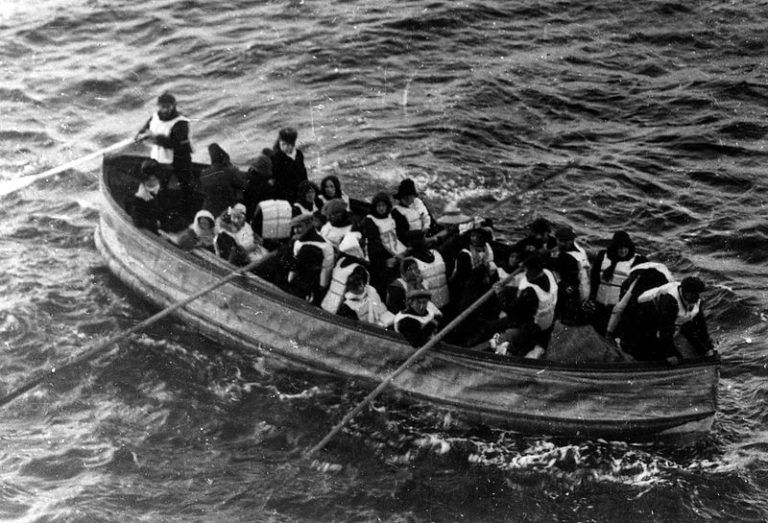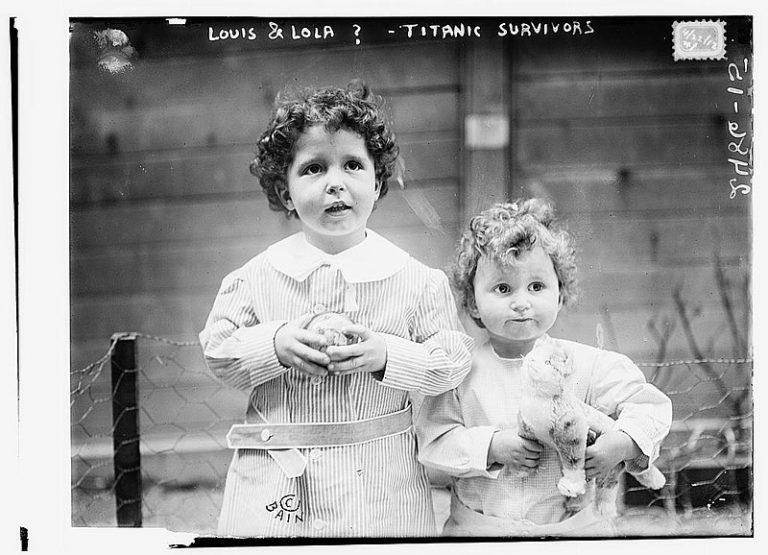“Immeasurable Sorrow and Unending Grief”: The Allison Family
Bess Daniels met her future husband, a stockbroker from Montreal named Hudson Allison, in 1907 while they were passengers on a train.
They married in her hometown of Milwaukee, Wisconsin, in December of that same year, on Hudson’s 26th birthday. Bess was newly 21.
Less than five years later, Hudson and Bess boarded the Titanic as First-Class passengers at Southampton on the morning of April 10, 1912. With them were their young children—Lorraine, who was 2 years old, and their infant Trevor—and four servants.
The Allisons occupied First-Class cabins on C-Deck, which they shared with their maid, Sarah, and Trevor’s new nurse, Alice Cleaver.
Their cook, Mildred, and their chauffeur, George Swane, were booked with Second-Class cabins.

PUBLIC DOMAIN
The Allison family had sailed to the United Kingdom in order for Hudson to attend a meeting of directors, as he was on the Board of the British Lumber Corporation. They took a side trip up to the Scottish Highlands so Hudson could pick up horses for the Allison’s stock farm back home. While there, they also hired the four servants that were traveling with them on Titanic.
On the night of April 14, Hudson and Bess dined with Major Arthur Peuchen and fellow Canadian Harry Molson. Later, Bess brought little Loraine up to the First-Class Dining Room to awe at its Jacobean prettiness.
When Titanic struck the iceberg later that night, the new nursemaid Alice woke the Allisons, but per her (presumably defensive) account, they dismissed her concern, insisting that it was nothing more than her imagination.
Some time after the engines had ceased, Mr. Allison finally consented to go up on deck to seek the trouble. Alice said that she advised that the family would have to evacuate the ship, and Mrs. Allison became “hysterical.” Alice, wrapping the baby, did her best to calm Mrs. Allison.
An officer then came by and advised an immediate evacuation to the boat deck. And so Alice, with the bundled baby Trevor in her arms, exited the suite. She claimed that she found Mr. Allison in the hallway.
[I] here met Mr. Allison outside the cabin but he seemed too dazed to speak. I handed him some brandy and asked him to look after Mrs. Allison and Loraine and I would keep Baby [Trevor]… some confusion occurred outside as to which deck we should go and that is how [Mr. Allison] came separated, afterwards I learned from one of the staff that Mrs. Allison was hysterical again and that Mr. Allison had difficulty with her…
Alternate accounts reflect that Alice took Trevor with her to retrieve George and Mildred in Second Class, without informing either Mr. or Mrs. Allison.
In the end, it is reported that George Swane escorted Alice to Lifeboat 11. Trevor was then carried into the boat by bedroom steward William Faulkner, who was instructed to stay aboard, and thusly also rescued in Lifeboat 11.
Also in the lifeboat was Mildred, the cook that the Allisons had hired. According to a letter from Mildred to her mother on April 19, 1912, written on board Carpathia and postmarked from Grand Central Station in New York City:
No sooner was I on deck that I was bustled to the first class deck and pushed into one of the boats and I found nurse (Alice Cleaver) and the baby (Trevor Allison) were there. It was awful to put the lifebelt on it, seemed as if you really were gone.
Mrs. Allison, meanwhile, had already been seated in Lifeboat 6 with her little daughter, Loraine.
But Bess Allison jumped out of the lifeboat.
Per their friend Major Peuchen, who was interviewed by the Montreal Daily Star:
Mrs Allison could have gotten away in perfect safety, but somebody told her Mr Allison was in a boat being lowered on the opposite side of the deck, and with her little daughter she rushed away from the boat. Apparently she reached the other side to find that Mr Allison was not there. Meanwhile our boat had put off.
In a separate interview, Major Peuchen elaborated upon Bess’s actions.
She had gone to the deck without her husband, and, frantically seeking him was directed by an officer to the other side of the ship. She failed to find Mr. Allison and was quickly hustled into one of the collapsible life-boats, and when last seen by Major Peuchen she was toppling out of the half-swamped boat.
Bess and her daughter, possibly alongside Hudson, were last seen together on deck near the officers quarters.
Mr. and Mrs. Allison, their little girl, and George Swane all died in the sinking.
Young Loraine Allison was the sole child of all in First and Second Class to die. Her mother was one of only four First-Class women to die.
Hudson Allison’s body was recovered by the Mackay-Bennett and noted.
| NO. 135. - MALE.
CLOTHING - Leather coat; blue suit; grey silk muffler. EFFECTS - Keys; letters; photos; stock book; three pocket diaries; one C. P. Railway ticket book; two pocket books; card case; $143.00 in notes; chain with insurance medals; £15 in gold; $100.00 Thomas Cook & Sons travellers' cheque; £35 in notes; gold cuff links; diamond solitaire ring; gold stud; knife; silver tie clip; $4.40 in odd coins; traveller's ticket. FIRST CLASS. |
Thereafter, George Swane’s body was also found.
No. 294 - MALE - ESTIMATED AGE, 18 - HAIR, DARK
CLOTHING - Blue suit; grey socks; low shoes.
EFFECTS - Chain; sovereign case, empty; 33s 5d in cash; one tie pin; two motor licenses.
NAME - GEORGE SWANE, 73 Little Cadogan Place, London, S.W.
The bodies of Bess Allison and little Loraine Allison, if ever recovered, went unidentified.
Upon their arrival in New York City, Alice Cleaver relinquished custody of the now-orphaned Trevor Allison to his uncle and aunt, George and Lillian Allison.
Trevor Allison died in 1929 from food poisoning. He was 18 years old.
And then, years on, Titanic was forced to shoulder its very own Anastasia story.
Decades later in 1940, a woman named Helen Loraine Kramer came forward, claiming on a radio show to be the long-lost toddler, Loraine Allison. Over the course of time, she insisted that she had been saved in secret—and then raised—by no less than Thomas Andrews, who she claimed had disguised his identity under the alias of "James Hyde" to avoid persecution.
Kramer’s granddaughter reinvigorated the rumor in 2012, claiming to have found definitive proof in the form of paperwork in the late Kramer’s suitcase.
Genetic testing was finally performed in 2013 as a result of the Loraine Allison Identification Project. It proved that Kramer’s absurd claim, unsurprisingly, to be entirely false.
David Allison, grandson of Hudson’s brother Percy, issued the following statement.
The Allisons never accepted Mrs Kramer’s claim, but the stress it caused was real. It forced my ancestors to relive painful memories described to me as immeasurable sorrow and unending grief… I would like to thank Deanne Jennings and Sally Kirkelie for offering their DNA to stop this harassment. This was a courageous, selfless act, and I will remain forever indebted for their act of kindness.
David’s sister, Nancy, also said the following.
These DNA results have uncovered a colossal fraud that has haunted my family for years. It was all about the money …. Debrina [Kramer’s granddaughter] wants to write a book and no doubt there are others out there who want to profit from our story. It is our story. Leave us in peace.
Tantalizing though some may find them, dear reader, it is only kind to remember: conspiracy theories do harm to innocent people.
SOURCE MATERIAL
https://www.encyclopedia-titanica.org/titanic-victim/hudson-joshua-creighton.html
https://www.encyclopedia-titanica.org/titanic-victim/bessie-waldo-allison.html
https://www.encyclopedia-titanica.org/titanic-survivor/trevor-allison.html
https://www.encyclopedia-titanica.org/titanic-survivor/alice-cleaver.html
https://www.encyclopedia-titanica.org/titanic-survivor/mildred-brown.html
https://www.encyclopedia-titanica.org/description-of-recovered-titanic-bodies.html
https://crashmacduff.wordpress.com/2014/01/20/lost-child-of-the-titanic/
